For the majority of us who started in the hobby, our initial lure was watching a beautiful colored fish in a saltwater tank in the local fish shop. It could have been a clownfish frolicking in an anemone or a majestic angelfish filling a tank with colors we could not believe or even a yellow tang picking algae from the rocks.
Despite how much we love our corals, fish are still pretty much a requirement in every reef tank. In fact, I once even set up a tank that housed nothing but corals, as fish had proven to be a headache. The corals were thriving, and I thought the tank looked beautiful, but when I brought in people to see it the response was always the same. “It looks great, but where are the fish?”
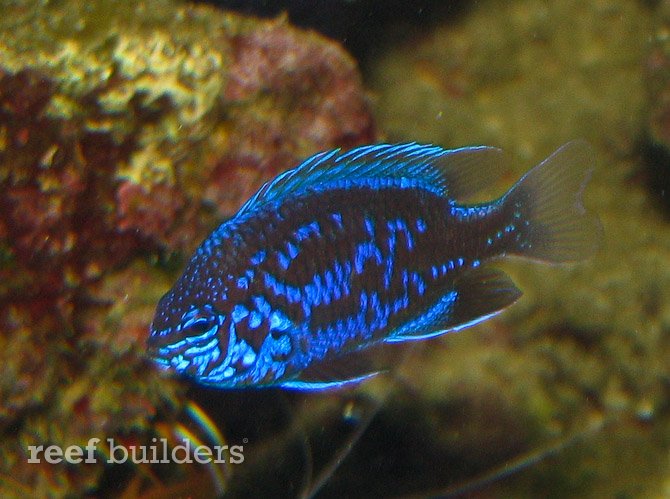
Whether you are an established hobbyist or new to reef tanks having fish is a necessary aspect of having a reef tank. For someone just setting up a reef tank this can be a daunting task, as there are just so many amazing fish that it is hard to decide which ones you want in your tank. And as someone who has learned the hard way, you can’t have them all. Please remember this.
Up until the last decade or so choosing the best fish for a reef tank was somewhat easier as all that was necessary was to visit the local fish shop, get their advice, see what they had, purchase them, and then add them to your tank. Unfortunately, as with most things, the internet and online shopping have changed this dramatically. First, the internet has caused a dramatic reduction in the number of local shops in general and it has also caused many to switch or reduce their saltwater selections.
Second, the internet is now the main source of advice, and while it can provide good advice, sometimes there is too much. The internet has more importantly, at least to me, led to the online purchase of many fish. This has produced the secondary consequence of not being able to see a fish in person before it is purchased. This has consequences which will be discussed below.
What to consider before buying a new marine fish
When deciding on fish for a new tank there are a number of general factors that need to be considered before they are purchased and added to the tank. The easiest of these is what size a fish grows to as an adult and because of this size what size tank it needs. This is relatively simple as you do not want to add a fish that will grow extremely large into a tank where it will be cramped.
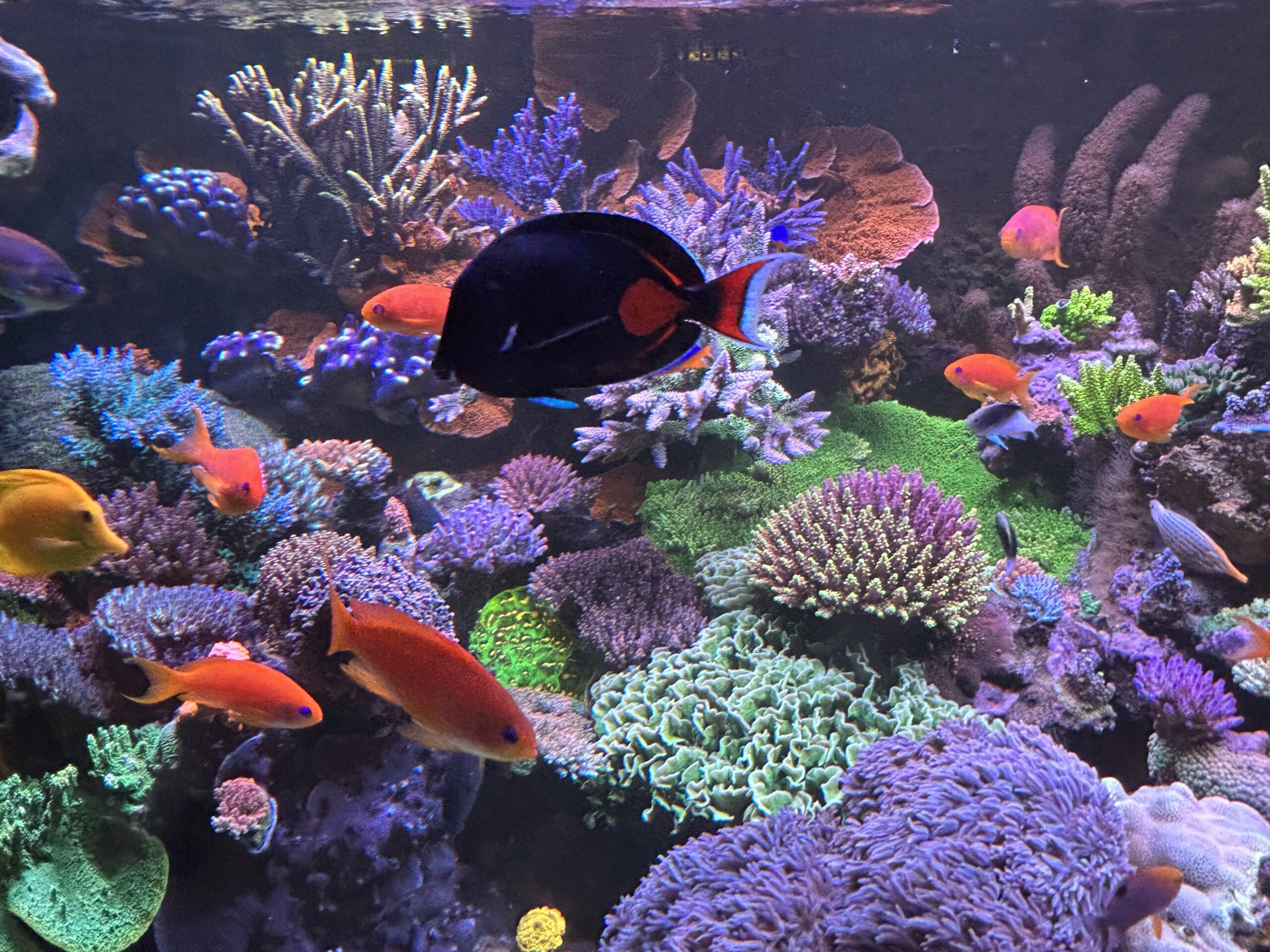
For example, you don’t want to put a juvenile angelfish or tang, even though they are small, into a 30-gallon tank only to realize later that these fish may reach a foot in size. Conversely, you do not want to put a tiny fish into a large tank where it will be lost. While a small fish may survive in a large tank for at least the short term, over time it will either be eaten by the larger inhabitants or become injured by the powerful equipment that is used in a larger tank.
The next consideration is the habitat or niche where a fish lives in the wild. Despite the majority of fish for sale all being from reefs, different fish come from different areas each of which possess different characteristics. Some come from the high energy areas, some from deep water and some from the lagoons for example. Each of these has somewhat different characteristics, and while fish are adaptable, they generally do best when the conditions in a tank are similar to the conditions they came from. So this needs to be taken into consideration when selecting fish for a reef tank.

Temperament and compatibility are other factors that need to be considered. Some fish are belligerent to most other fish, some to new fish that are introduced to the tank and others are nasty to fish similar to themselves in terms of color or shape. This is why selecting fish that are compatible with one another is crucial for long-term success.
Due to how competitive the reef environment is, all fish are to some degree aggressive, otherwise, they are just food or a punching bag for other fish. Managing this aggression and getting fish that can live together and thrive is important. This can even be managed to a degree when selecting fish by adding the least aggressive fish first and the most aggressive last. How to add fish properly will be the topic of a future article.
Managing the temperament and compatibility of specific fish also plays into the consideration of the care level that a fish requires when selecting them, as does their activity level. Activity level refers to how active a fish is in that some fish are constantly moving around, are aggressive feeders, and generally require bigger tanks than less active fish. When considering this factor you do not want to have less active fish, like seahorses or pipefish with active fish like tangs. If this is done the less active fish will fail.
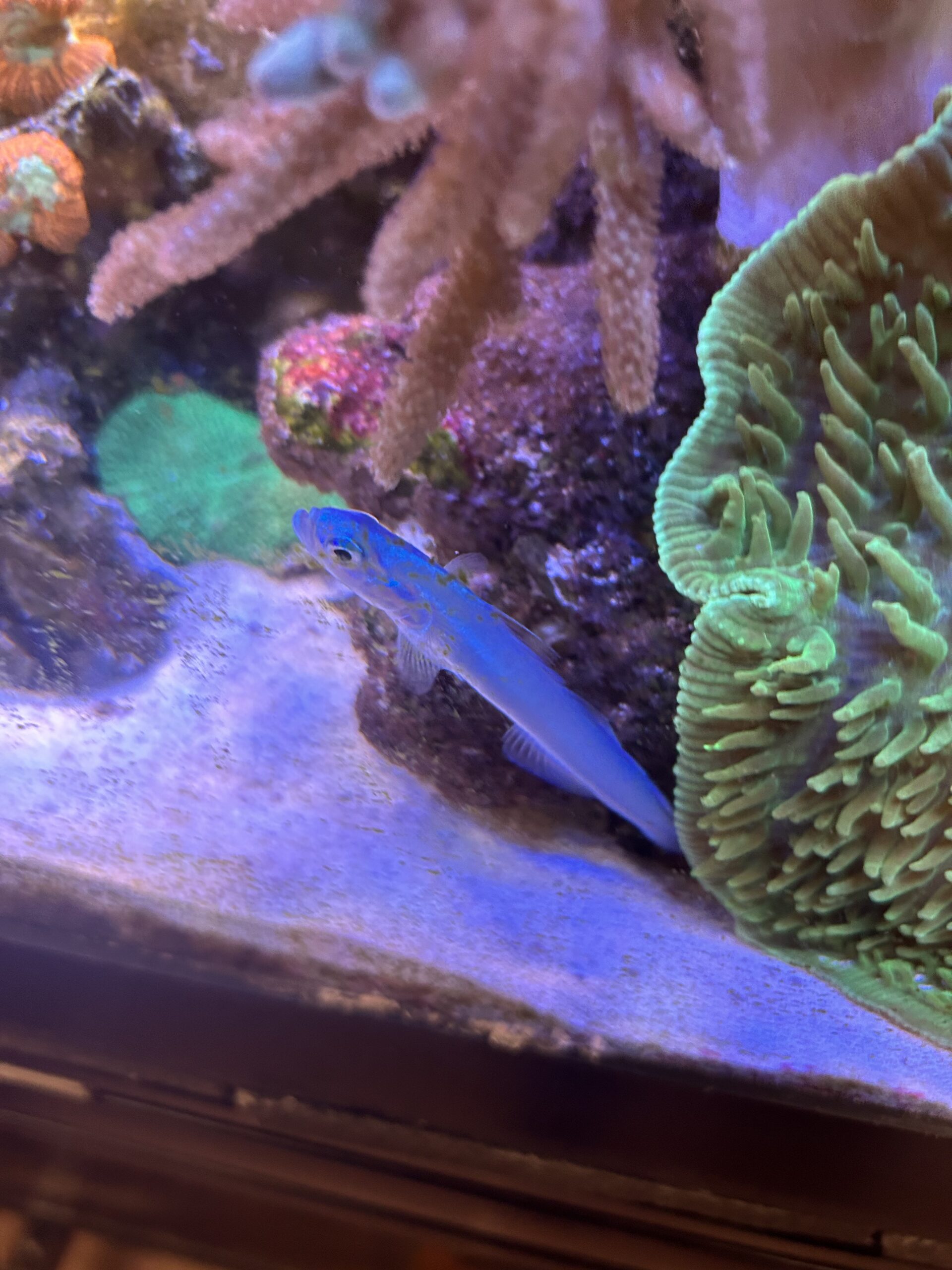
The fish to be added should also be looked at in terms of ease of care and there are lots of sites that will discuss which fish are easy, and which are difficult. Some fish are considered “easy” in terms of their care requirements, these fish get along well with most fish, eat most foods and can thrive when conditions are less than optimal. Other fish that are considered “difficult” may be shy and hide all the time, or are easily bullied or spooked. More difficult fish may have very specific food or space or even aquascaping requirements in order to thrive. These types of fish should probably be left until more experience is acquired. Regardless of the care level required this factor needs to be determined before a fish is selected.
A specific aspect of care requirements that needs to be addressed is the diet of a fish. Some fish are predators, like basslets and dottybacks, while others are herbivores, like tangs and rabbitfish, while others are omnivores that will eat anything like some angelfish and wrasses. Each of these fish do better when their dietary requirements are met so a variety of foods are required to meet this goal. Along with their diet, the frequency with which they need to be fed also needs to be considered.
Predatory fish usually prefer a couple of larger feedings while omnivores and herbivores do best on small frequent feedings. These factors including diet and feeding as well as all of the factors listed above can all help in coming up with a list of fish that might be suitable for your specific tank and meet your needs as well.
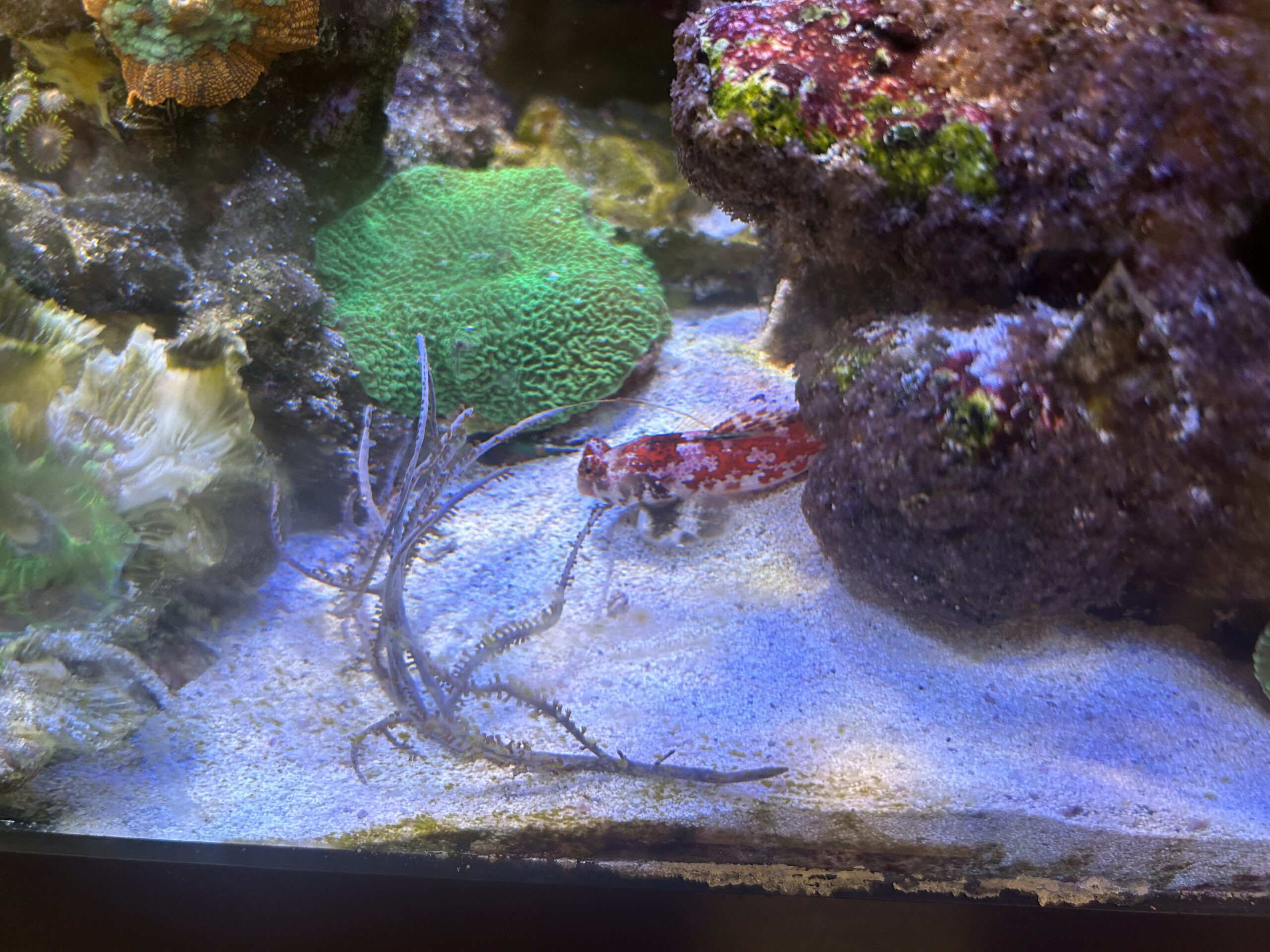
Two other important factors to look at when deciding on fish are visual appeal and longevity. There are lots of beautiful fish to choose from and everyone has a different idea of what fish appeal to them. After looking at all of the other factors this should be a tie-breaker when deciding on a fish. Similarly, how long a fish may live also needs to be taken into consideration. This last aspect feeds into another consideration: cost.
Saltwater fish are not inexpensive so their cost and longevity should be considered when choosing a fish. If a fish costs $100 but is expected to live at least five years it may actually be a better choice than a $25 fish that will only live a year. Granted we never know if our conditions will be such that a fish will live out their full life expectancy, but all things being equal this needs to be taken into account. I should also point out that a beautiful tank does not require highly expensive fish. I have seen numerous beautiful tanks that contained only less expensive fish. So a high price does not need to be the reason for buying a fish.
When coming up with a list of desirable fish one other factor needs to be considered and that is whether a fish is reef-safe or not. This question is not as simple as it may seem in that some fish are compatible with some corals and not with others so what kind of corals you hope to house correlates with which fish you should have with them. While many fish are listed as reef-safe, this can change with any individual fish over time.
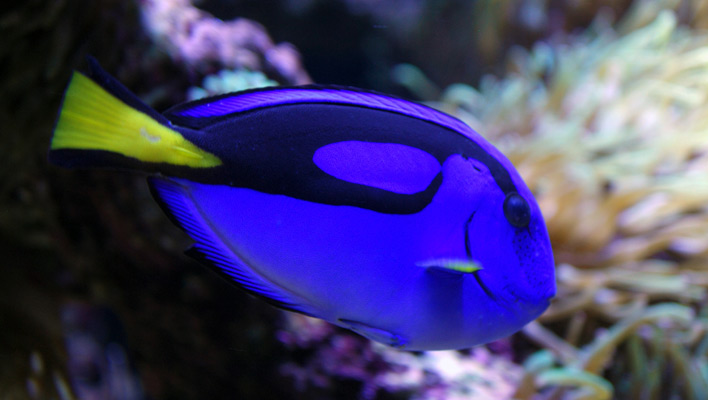
I have had fish in tanks for years that did not bother anything and then something changed, and they suddenly became coral-eating fiends. For this reason, it is necessary to do your homework before deciding to add one fish or another based on what corals and other invertebrates you have in a tank. Also as noted some fish are good with one fish and not with others. Look up compatibility charts and see if the fish you want will all get along. This will go a long way in having a peaceful compatible tank.
Once a list has been put together of desired fish, the next step is obtaining them. If you have a good local fish shop you can work with them on getting your fish. If this is the route you can take I highly recommend doing it that way as that way you can see the fish, make sure they are well-kept and disease-free, and most importantly see that they are eating and what they are eating. Being able to do this goes a long way in helping to get a healthy fish population. But if you can’t do this there are now lots of online sites that sell fish.
Before buying from any online source do your homework and look at not only the prices of the fish you want, but more importantly the reviews of the online source you want to use. Also, see how long a site has been up and running. Long-established businesses with good reviews generally are good otherwise they do not last long, so keep this in mind. Regardless of where you get your fish, I highly recommend that you quarantine everything before you add it to your display tank. I will discuss proper quarantine in next week’s article.
After doing all of this you are ready to get the fish you want and quarantine them. I frequently get asked what fish I would start a new tank with so I have come up with these. If I were setting up a new tank again as a beginner these are the fish I would add to any new tank between 30 and 90 gallons.
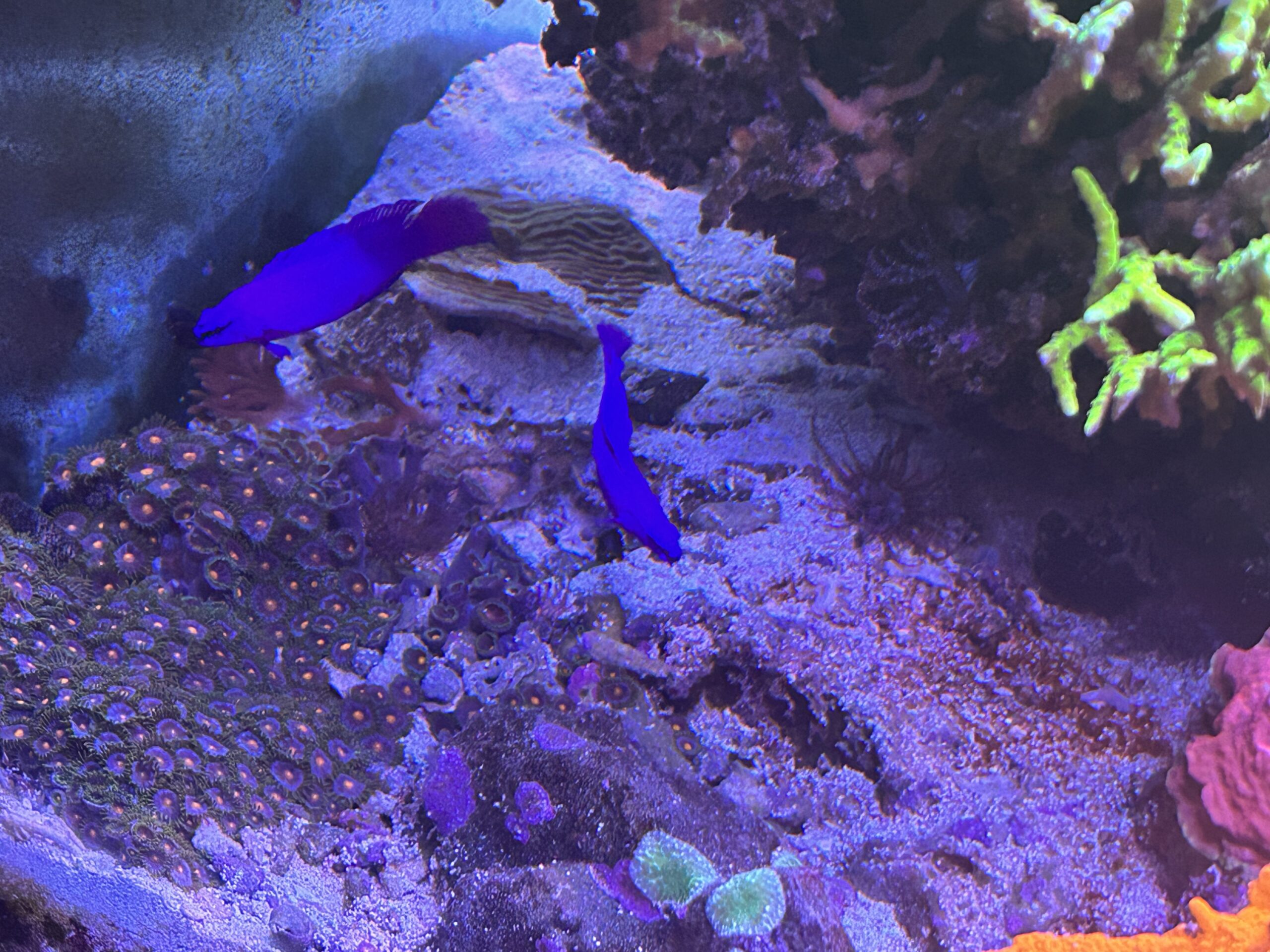
A pair of Percula or Ocellaris clownfish, a pair of Talbot’s or Springer’s damselfish, a starry or orange-spotted blenny, a small mimic tang, a pair of Pajama or Bangaii cardinalfish, a pair of orchid dottybacks and a pair of dartfish. These are all easily obtainable, relatively inexpensive, hardy, and compatible and some of them are even captive-bred. They will provide color and interesting behavior and at least to me are a good group to start with. I’m sure there will be lots of differing opinions on this selection and that is how it should be as there is no perfect list they are all matters of opinion.
Adding fish to a tank is exciting and one of the more fun aspects of setting up a new system. As with everything in this hobby, the fish should be selected carefully and patiently, there is no rush to pick them. There are some aspects to selecting them and adding them to a tank that will be discussed in the next two articles. But for now, starting to decide on which fish you like is a good place to start.




